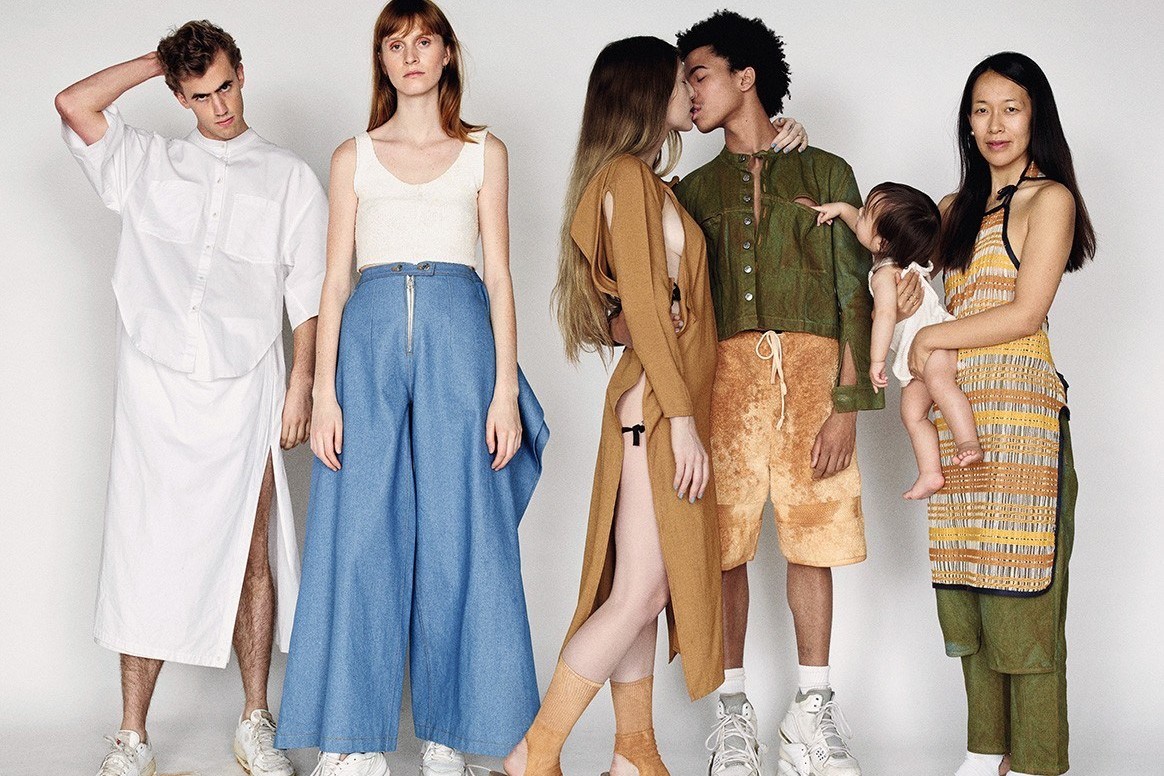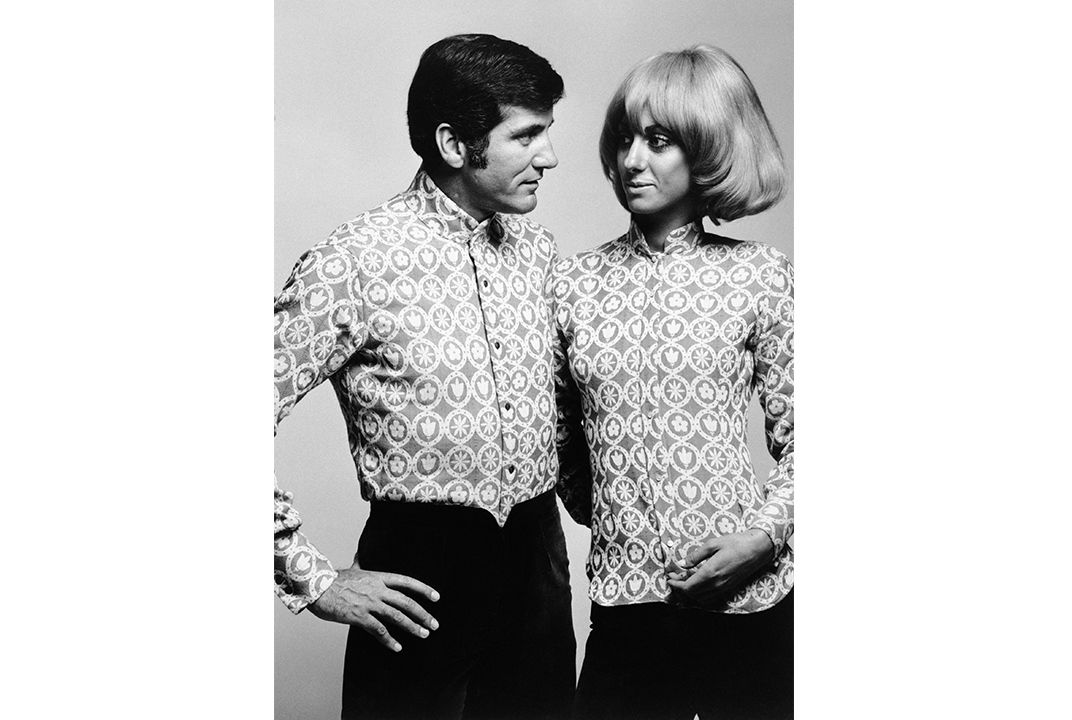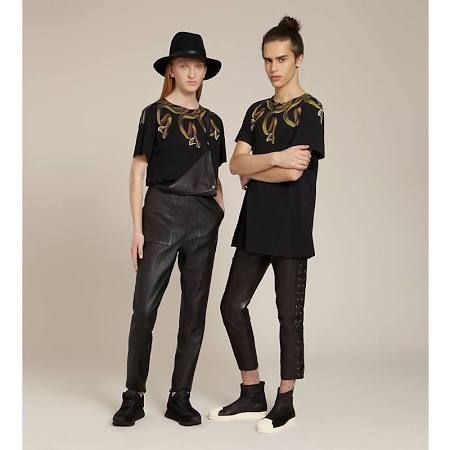Lets Talk about "Gender" what is His ‘n’ hers?
Written by Casey Milano
There was a time when if a man walked into the women’s department and vice versa you were either lost or just wanting to buy the easiest item possible for a loved one with the least amount of fuss. This is when the male and female fashion collections were separated, there was no space in between, the sexes were binary and the only time a woman could wear a man’s piece of clothing was if she borrowed his jacket on the way home. As Freud put it: “When you meet a human being, the first distinction you make is ‘male or female?’ and you are accustomed to make the distinction with unhesitating certainty.” Had Freud lived through the 20th century instead of the 19th, he might not have been so stringent in this opinion. Because now a glorious new era has started – whatever sex you are you can wear whatever you want from any part of the shop (apart from children’s because that’s just weird). Welcome to the world of unisex fashion.
In February of this year the CDFA who organises New York fashion week added a ‘unisex/non-binary’ as a new category, to the fashion world it was about time, but it made history none the less. With the gender norms as well as a lot of others are being questioned unisex clothing is a no brainer and though it might not be to everyone’s taste it is nothing but a good thing.
With designers releasing unisex collections (Tom Ford, J.W. Anderson, Balenciaga, just this year) the trend has been here a lot longer than you may think - It’s a change that has been happening on the runway for years.
Gender stereotyping of the 1950s, itself a reaction to the perplexing new roles imposed on men and women alike by World War II. The term “gender” began to be used to describe the social and cultural aspects in the 1950s. The unisex clothing of the 1960s and 70s aspired “to blur or cross gender lines”; However, it wasn’t very successful – perhaps it being the era of short dresses and Marilyn Monroe the plain ‘one style fits all clothing’ of unisex fashion was ahead of its time. But the trend was brought back to life in the 1980’s by the likes of Jean Paul Gaultier and Alexander McQueen.
The new generation of non-binary designers though taking inspiration from the past have revolutionised the unisex trend, no longer boring and shapeless the new unisex has bold prints and luxury denim and even skirts! (thanks Jaden Smith). From Louis Vuitton to Wales Bonner unisex fashion has been revamped for this modern generation. The movement is not just taking over the runways however, it’s also hitting the high street – many stores now have gender-neutral zones where their men’s and women’s collections blend - with some of the biggest being Selfridges, Zara and H&M who recently with their ‘Denim United’ collection of which a denim dress aimed at both men and women made fashion headlines. The high street brand has said “With this collection we are rethinking the mindset around ‘his’ and ‘hers’ clothing, blurring borders and challenging norms, traditional thinking is revisited with menswear and womenswear borrowing both materials and silhouettes from each other.”
It’s not simply masculine meets femininity, its clothes that have a gender fluidity, no identity, no label, its wearing clothes that were at one point just for women and just for men. Take Balenciaga, for next season they have designed a collection of velvet bodysuits and saddlebag-hip coats for both men and women.
Let us not forget however who has been behind the unisex movement with an entire label dedicated to it rather than just a collection, just to name a few - Self-proclaimed “non-demographic” label 69 doesn't let any human variables constrain its designs. The LA-based brand’s cartoonish oversized silhouettes imply that its clothing is not tailored to any age or gender. For his most recent presentation, Vaquera not only replaced traditional models with friends but he also staged the event in a busy underground subway station in NYC, exposing DiCaprio’s thought-provoking collection to the public. Being raised as a boy during China’s one-child policy years partially influenced Danxia Lu’s gender fluid approach to fashion. Yet, almost as the counterpart to this, her feminist outlook propelled her to study fashion and in turn create her label Danshan. Not designing for one gender Rad Hourani, in creating his eponymous gender-neutral collection through a navy, black, white and tan colour scheme, unveils various sleek, structured silhouettes that are suitable for anyone.
Not only has this change been huge for the fashion world its also gone a long way in breaking down the stereotypes for trans and non-binary/gender fluid people, as well as propelling feminism further into pushing out gender roles. Unisex clothing cannot simply be boxed into a ‘trend’ and though many of us will always identify our clothes with male or female labelling what non-gender clothes say without speaking is that what we wear has no impact on who we are and how we choose to identify ourselves. It brings the issues trans and non-binary people face to the forefront and starts the conversation of other ways we can make a change to include everyone in fashion and society in general. Perhaps with the opportunity to change perceptions around what male and female clothing should be, we can just let it be.








